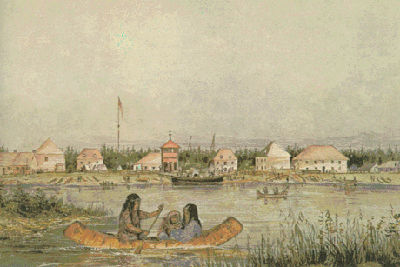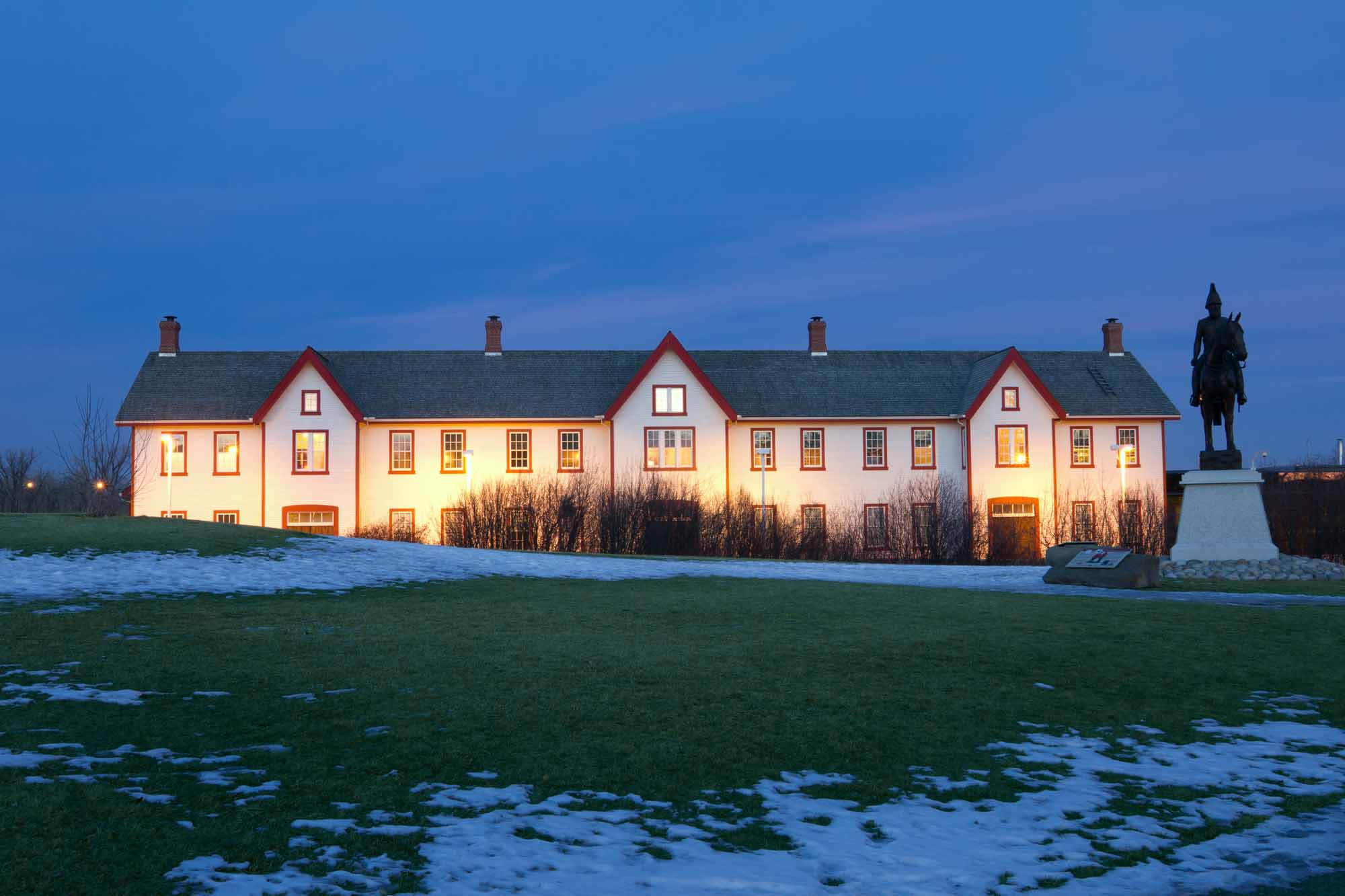Fort William, named after North West Company (NWC) chief superintendent William McGillivray, was originally a depot built in 1803 by the NWC to facilitate fur trade dealings. The company’s reliance on Fort William after merging with the Hudson’s Bay Company eventually decreased, and the fort became a post and fishing spot until its closure in 1883. By 1902, the Fort William’s last remaining buildings were completely demolished in the expansion of the Canadian Pacific Railway’s facilities.
In 1971, the government of Ontario recreated Fort William at Pointe de Meuron in Thunder Bay under the name Fort William Historical Park.

History of Fort William
In 1803 the North West Company (NWC) constructed a new fort at its Lake Superior headquarters, replacing Grand Portage, which had come under United States jurisdiction. At the mouth of the Kaministiquia River some 50 km north of the international boundary, the new depot served until 1821 as the site for the NWC's annual summer rendezvous of Montreal agents and wintering partners, and as its major transshipment point for furs and trade goods.
Named in 1807 after NWC chief superintendent William McGillivray, Fort William occupied a pivotal place in the company's vast trading network. In 1816-7 Lord Selkirk occupied Fort William for 10 months as a consequence of the Seven Oaks Incident. This occupation, combined with major financial difficulties, led to the NWC merger with the Hudson’s Bay Company in 1821. With the Montreal transportation system virtually abandoned in favour of the HBC's, Fort William lost its importance in the fur trade. As a post and fishing station of the HBC, it gradually declined until its closure in 1883.

In 1902 its last standing structure, the NWC's Stone Store, was demolished to make way for the Canadian Pacific Railway's expanding grain and freight shipping facilities. The only reminders of Fort William's fur-trade past now at its original site are the local historical society's cairn, unveiled 1916, the Historic Sites and Monuments Board's marker, erected 1981, and neighbouring street signs bearing the names of renowned NWC and HBC fur traders.
Fort William Historical Park
Prompted by the community's active interest in Fort William's role as gateway between East and West, and also by the recognized potential of heritage attractions for tourism, the Ontario government decided in 1971 to reconstruct Fort William as it was in the North West Company period. Known as Fort William Historical Park, the reconstruction is located in Thunder Bay, Ontario, at Pointe de Meuron, 14 km upriver from the original site.
Through its costumed staff, the fort's living historical program depicts the activities of the rendezvous, the annual gathering of Scots traders, French Canadian voyageurs and Indigenous trappers. It also portrays the fur-trade society and material culture of the early 19th century. Other facilities include a visitor centre, resource library, gift shop, and one of Canada's largest outdoor amphitheatres. Fort William Historical Park also offers programs for schools, special-interest groups and businesses along with numerous special events and festivals every year.


 Share on Facebook
Share on Facebook Share on X
Share on X Share by Email
Share by Email Share on Google Classroom
Share on Google Classroom


